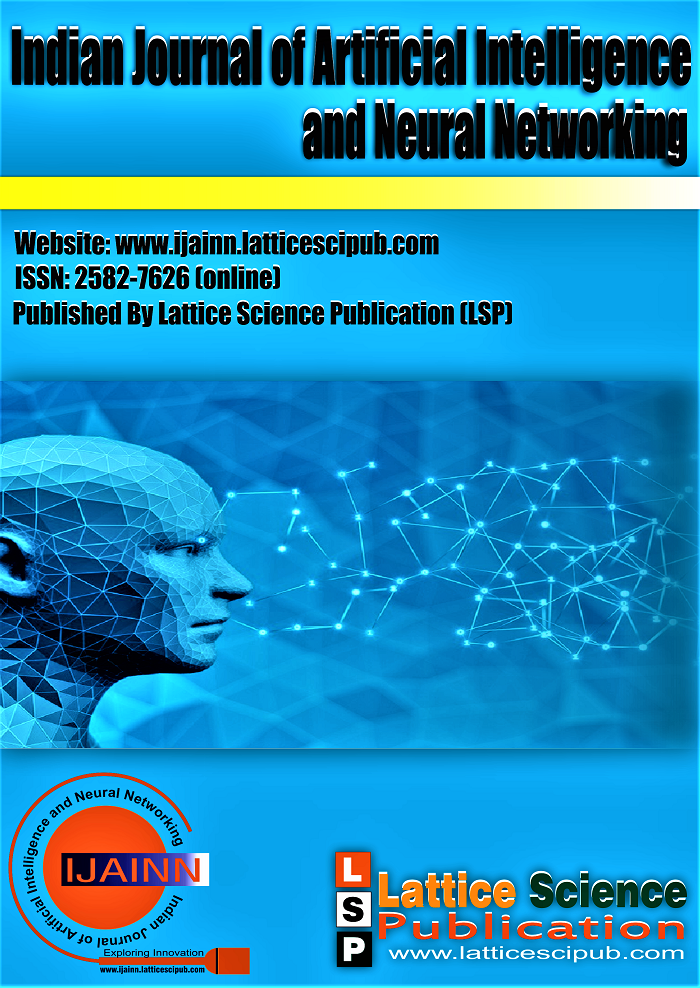Smart Temperature Control Using Neuro-Fuzzy Model
Main Article Content
Abstract
The temperature control model employs a neuro-fuzzy approach with a defined universe of discourse encompassing temperature (20℃-50℃), humidity (30%-90%), and fan speed (20%-70%). Membership functions were established, utilizing generalized bell functions for temperature and humidity, along with trapezoidal functions for fan speed. A rule base comprising nine rules was developed, incorporating temperature and humidity as linguistic input variables and fan speed as the linguistic output variable. In the data preprocessing phase using Python, 60% of the dataset was designated for training, while 40% was set aside for testing with the scikit-learn model. A convolutional neural network (CNN) was created using TensorFlow’s Keras API, featuring 64 neurons, ReLU activation, and two input shape features. The model underwent training for 100 epochs with the Adam optimizer and a batch size of 16, achieving a training loss of 0.9951 and a test loss of 1.0239. The closely matched and relatively low values of both training and test loss indicate that the model is not overfitting and has successfully captured the underlying patterns. For instance, when the current temperature and humidity were set to 35℃ and 65%, the recommended fan speed was 48%. Moreover, predicted fan speeds were 20.14%, 35.21%, and 43.64% for temperature and humidity settings of (35℃, 45%), (45℃, 75%), and (55℃, 85%), respectively.
Downloads
Article Details

This work is licensed under a Creative Commons Attribution-NonCommercial-NoDerivatives 4.0 International License.
How to Cite
References
Maya-Rodriguez, M. C. (2023). Temperature Control of a Chemical Reactor Based on Neuro-Fuzzy Techniques. In Energies 16(17) 6187. MDPI. DOI: https://doi.org/10.3390/en16176187
Hemanth. D, Mahalingam. M Subramanian. K, and Vijayanandh.T (2023). Automatic Adjustable Exhaust System for Temperature Regulation in Granaries Using Fuzzy Logic, 17pages. DOI: https://dx.doi.org/10.2139/ssrn.4671533
Kelvin Ndubuisi Nnamani (2021). Fuzzy Modelling of Automatic Greenhouse Control. In International Research Journal of Modernization in Engineering Technology and Science (Volume: 03, Issue: 03. pp: 87-92). https://www.irjmets.com/paperdetail.php?paperId=147ce121ee9e623ab026a3e5bc1e2b88
P. N. Nwankwo, K. A. Akpado, and Christiana C. Okezie (2024). Development of an Advanced Neuro-Fuzzy Algorithm for an Intelligent Temperature Control System. In International Journal of Advances in Engineering and Management (IJAEM) (Volume 6, Issue 09, pp 769-791). https://www.ijaem.net/past-issue-volume.php?issueid=71&title=Volume%206%20,%20Issue%209,%20September%202024
Savkovic. B, Kovac. P, Dudic. B, Rodic. D, Taric. M and Gregus. M (2019). Application of an Adaptive “Neuro-Fuzzy” Inference System in Modelling Cutting Temperature during Hard Turning. MDPI. DOI: https://doi.org/10.3390/app9183739
Doaa M. A and Hanaa T. E (2017). Analysis and design of greenhouse temperature control using an adaptive neuro-fuzzy inference system. In Journal of Electrical Systems and Information Technology (volume 4, No.1, pp 34-48). DOI: https://doi.org/10.1016/j.jesit.2016.10.014
Semih Kale (2020). Development of an Adaptive Neuro-Fuzzy Inference System (ANFIS) model to predict sea surface temperature (SST). In International Journal of Oceanography and Hydrobiology (Volume 49, No.4, pp. 354-373).
DOI: https://doi.org/10.1515/ohs-2020-0031
E. A Joseph, H.S. Okeke and M.A. Taiwo (2021). Development of Neuro-Fuzzy-Based Temperature Control for Egg Hatchery. In International Journal of Trend in Scientific Research and Development (IJTSRD)(Volume 5, Issue 4, pp: 598-601). https://www.ijtsrd.com/papers/ijtsrd41215.pdf
K. N. Nnamani, K. A. Akpado and S. U. Ufoaroh (2025). Integrated Neuro-Fuzzy Expert System for the Control of Hydro-Power Reservoir System. In International Research Journal of Modernization in Engineering Technology and Science (Volume 07, Issue 09. pp: 3476-3485). DOI: https://doi.org/10.56726/IRJMETS83194





